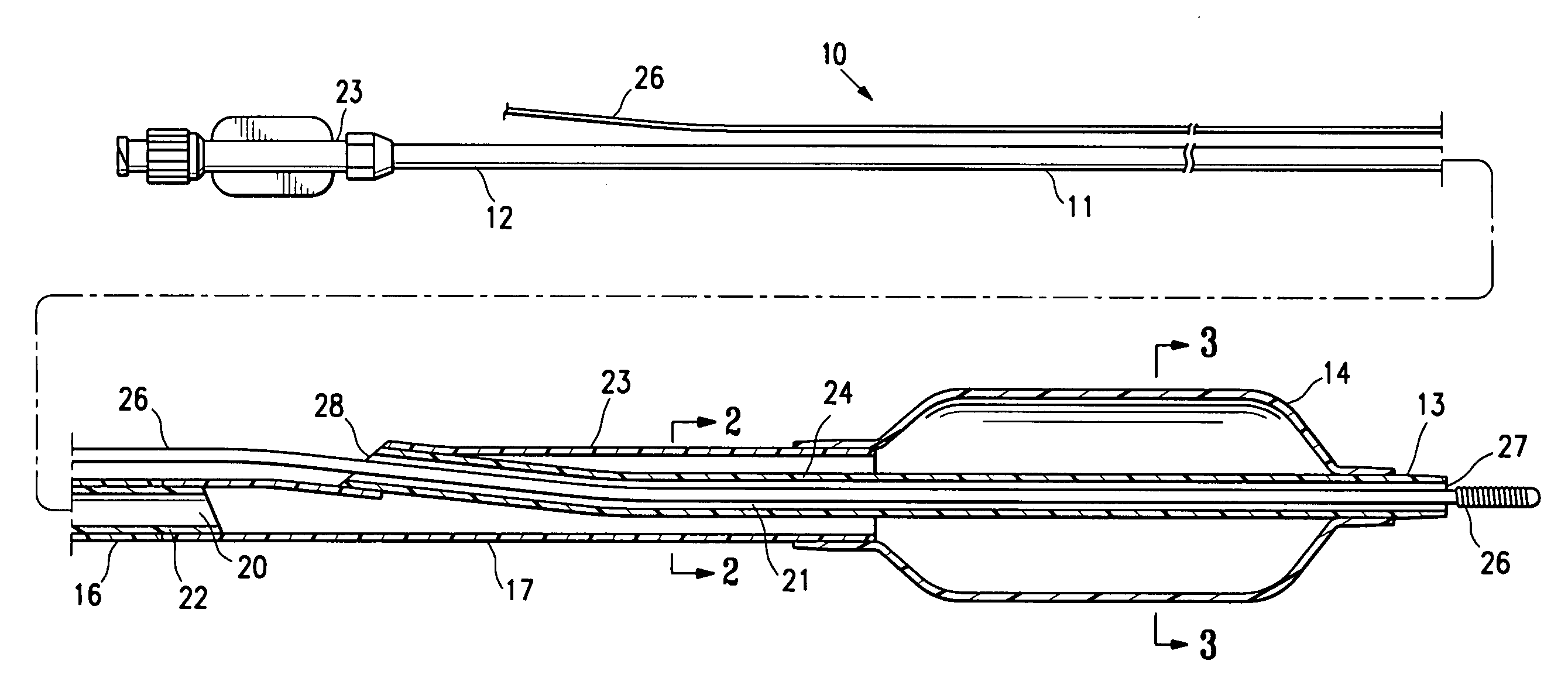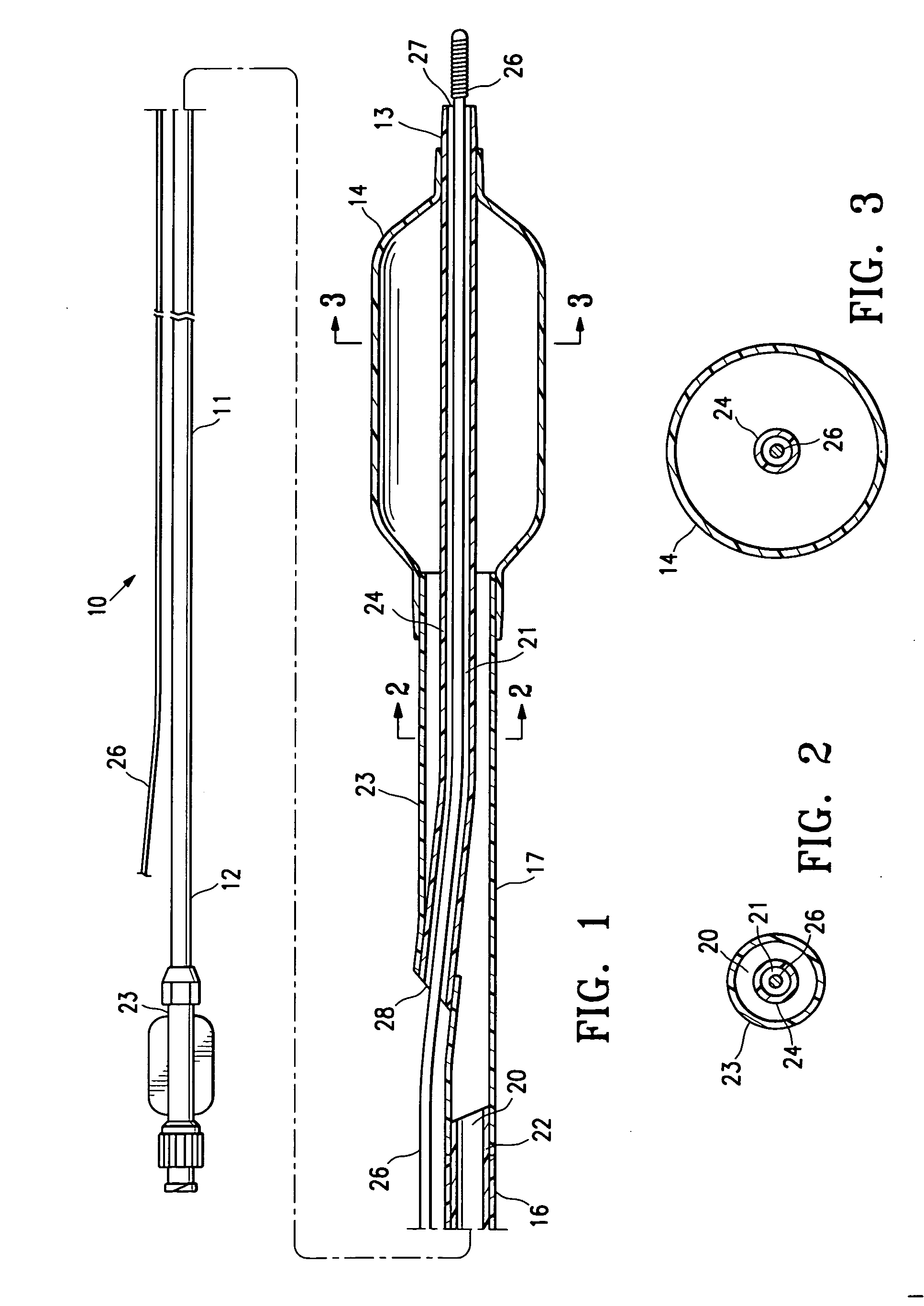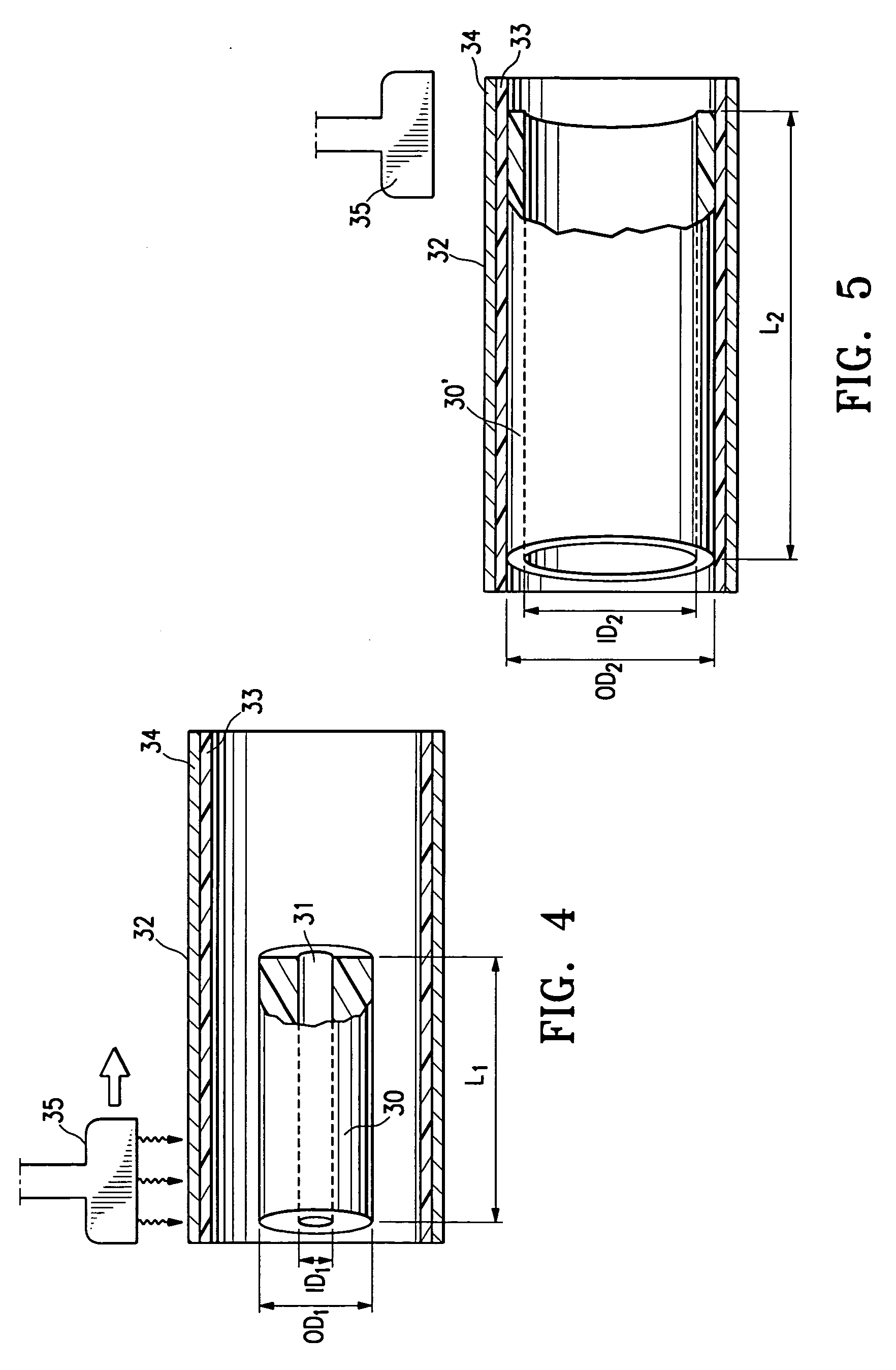[0006]This invention is directed to a catheter having an elongated shaft with a tubular member which forms at least a portion of the shaft and which is formed of a biaxially oriented
thermoplastic polymeric material. One aspect of the invention is directed to a method of forming the catheter shaft by radially and longitudinally expanding the tubular member to biaxially orient the polymeric material. A catheter of the invention preferably has an improved combination of low
bending stiffness, high rupture pressure, and high tensile strength, for improved catheter performance.
[0007]A method of making a catheter shaft of the invention generally comprises radially and longitudinally expanding an extruded tube, which results in an expanded tubular member having a higher rupture pressure and tensile strength than a tube extruded directly to the same final dimensions (i.e., wall thickness and outer
diameter) as the expanded tubular member. It is believed that the radial and longitudinal expansion circumferentially and longitudinally orients the polymeric structure within the material. However, the orientation does not significantly increase the bending stiffness of the tubular member. Thus, a relatively low durometer
polymer can be selected to minimize bending stiffness in the radially and axially deformed tubular member. The inherently low bending stiffness of the low durometer
polymer provides a longitudinally flexible shaft tubular member which more readily bends during maneuvering of the catheter within the patient.
[0008]In a presently preferred embodiment, the catheter is a
balloon catheter generally comprising an elongated shaft having a proximal end, a distal end, an inflation lumen extending therein, and a tubular member which has the inflation lumen therein and which is formed of a biaxially oriented nonporous
thermoplastic polymer, and a balloon sealingly secured to a distal shaft section. In one embodiment, the balloon is a relatively
high pressure balloon. The biaxially oriented polymer has polymer chains oriented longitudinally along the tubular member for increased tensile strength, and circumferentially around the tubular member for increased rupture pressure. The high tensile strength of the shaft tubular member improves catheter performance by, for example, increasing the ability to safely pull the catheter from within the patient's vessel without tearing apart / damaging the catheter, e.g., during retrieval of the catheter lodged in a calcific
lesion.
[0009]The balloon has an interior in fluid communication with the inflation lumen, and a rupture pressure which is significantly less than the rupture pressure of the shaft tubular member. As a result, the
balloon catheter preferably has a failure mode in which the balloon will rupture before the pressure-containing catheter shaft tubular member, to prevent or minimize vessel injury in the event of a catheter rupture. In one embodiment, the balloon is a relatively
high pressure balloon, for example having a rupture pressure of at least about 20 atm or more. The shaft tubular member preferably has a mean rupture strength substantially greater than that of the balloon, so that the distribution of the two rupture pressure ranges have essentially no statistical overlap.
[0014]In the design of shafts for balloon catheters, extruded catheter shaft tubing is conventionally resized to a smaller
diameter and wall thickness by
necking the tubing using a die and mandrel. Unlike such conventional
necking procedures which force the tubing through a die and thus primarily elongate the tubing with only a minimal decrease in tubing
diameter and / or wall thickness, the catheter shaft tubing of the invention is highly circumferentially oriented by being radially expanded to an inner diameter significantly larger than the original (extruded) inner diameter. In one embodiment, the tubing is radially expanded to substantially the maximum amount possible (based on the polymeric material and extruded tubing dimensions), which results in expanded tubing having minimal radial growth at increasing inner pressures. Consequently, the expanded tubing has an improved controlled failure mode. In the event that the shaft tubing is over-pressurized above the rupture pressure of the shaft tubing, the expanded tubing preferably fails by rupturing with a small longitudinally extending slit and without radially expanding against the vessel wall, which thus prevents or minimizes vessel injury.
[0015]The invention provides a catheter shaft tubular member having an improved combination of low bending stiffness, high rupture pressure, and high tensile strength. Preferably, a catheter shaft tubular member of the invention has a low profile and high flexibility such that the catheter has excellent ability to track and to cross tight, tortuous
anatomy, while having a high rupture pressure and the ability to maintain inflation lumen integrity during a
medical procedure. The high rupture pressure catheter shaft assures that inadvertent over-pressurization will normally result in rupture within the balloon (and most notably even a relatively high rupture pressure balloon) at the treatment site rather than elsewhere in the patient's vasculature. Unlike conventional catheter design in which shaft sections requiring minimized profile and / or maximized lumen size are typically formed of high strength / stiffness materials to allow for the shaft to be formed with thin walls, the catheter shaft section of the invention is formed of a relatively low durometer polymeric material providing a low bending stiffness. Similarly, unlike shaft sections formed with multiple
layers or reinforcements to increase the
burst pressure / strength of the shaft, the catheter shaft section of the invention has relatively thin walls, for minimizing the shaft profile while maximizing the shaft lumen size, and for minimizing the shaft bending stiffness.
 Login to View More
Login to View More 


